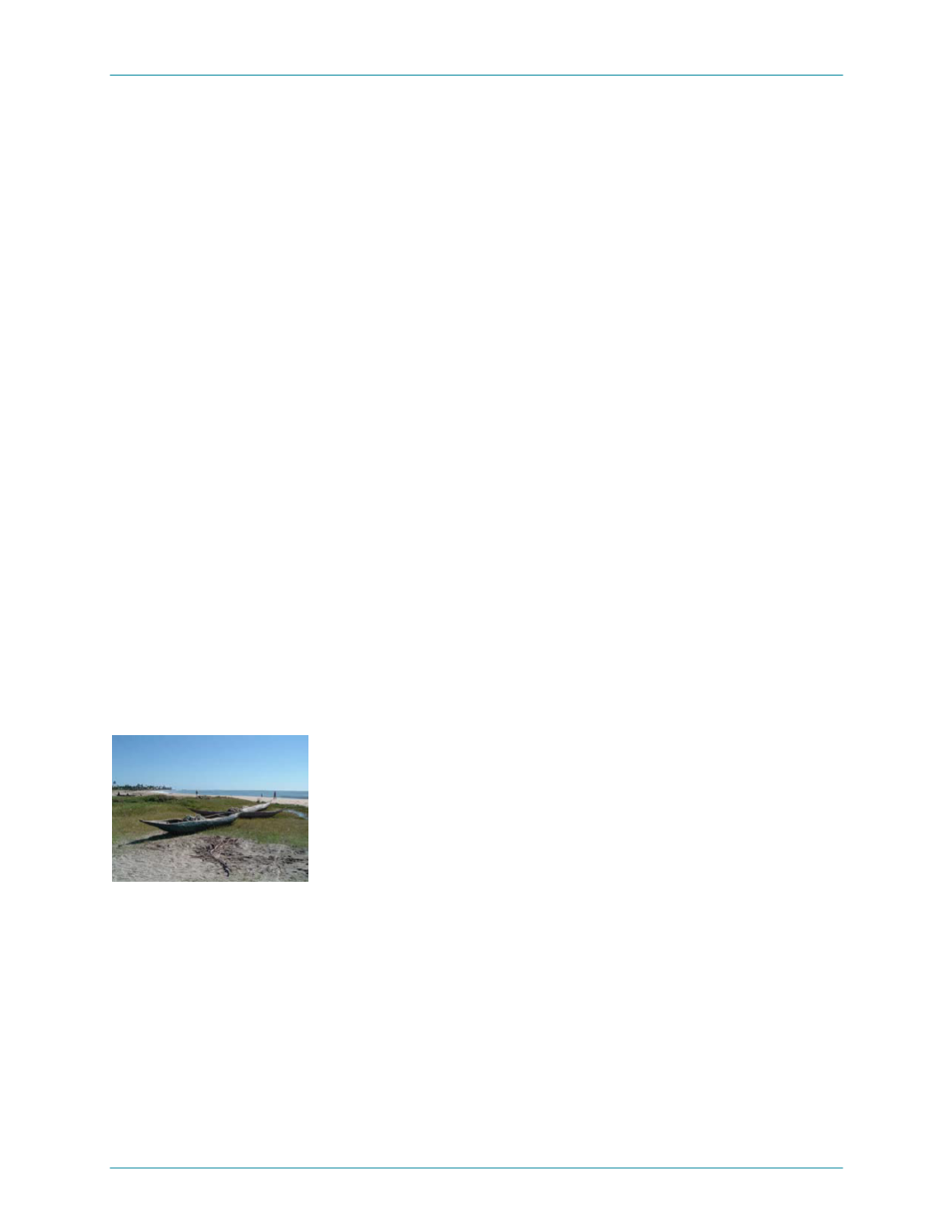
Summary
during storms and cyclones. A closure spillway will redirect flows from
the tailings basin into the original valley downstream. The groundwater
pump back system located at the base of the tailings basin will operate
for about 15 years post-closure, or until groundwater monitoring
demonstrates that seepage quality will not reduce the surface water
quality downstream.
Monitoring
Operational monitoring of stream flows and suspended solids
concentrations within the affected basins will be conducted to support an
improved understanding of water flows in the study area. Stream flow
records will be evaluated along with climate data to further assess water
availability for various environmental and social needs downstream of
the tailings facility.
Water quality monitoring will be routinely conducted on the tailings
effluent within the collection pond, the groundwater seepage from the
interception system, the down gradient groundwater wells and the
downstream surface water systems. Monitoring will be conducted during
operations and will continue through the short-term and long-term
closure scenarios, until results indicate that seepage from the tailings
facility will have no detrimental effect at downstream sites. Monitoring
downstream of the tailings of selected aquatic resources will occur,
linked with ongoing stakeholder consultation and any needed assistance
for local fishery management. A vegetation monitoring program will be
implemented to ensure that reclamation efforts are successful and
erosion control measures are working effectively.
Additional marine baseline water quality information will be obtained
along with further assessment of environmental health, to provide a
stronger baseline against which to compare operational monitoring.
More detailed information on the fish and fisheries will also be obtained
(particularly the southern gillnet fishery) prior to construction. Along with
effluent water quality monitoring, periodic monitoring of the marine biota
will occur during operations to track species distribution, composition and
abundance. The involvement of local fishermen in marine monitoring will
be most important, including evaluating any trends and considering
possible additional mitigation. Water samples will be collected during
operations at the outfall and at reference sites for the determination of
TSS levels. In order to monitor regional water quality, the sample
strategy being used to assess baseline conditions will continue into the
operational phase. Currently, the focus is on sampling the waters in and
around the reefs (reference sites). During operations, water samples will
also be taken within the outfall area. In addition, suitable marine
indicator organisms which are sensitive to outfall constituents will be
identified for use in a biological monitoring programme. Species which
are frequently monitored in these programmes include algae, mussels
and territorial reef fish. Selected sites on Nosy Faho and Le Grand Recif
would represent good long-term monitoring sites.
Fishermen’s boats near
Toamasina
January 2006
Ambatovy Project — 43


